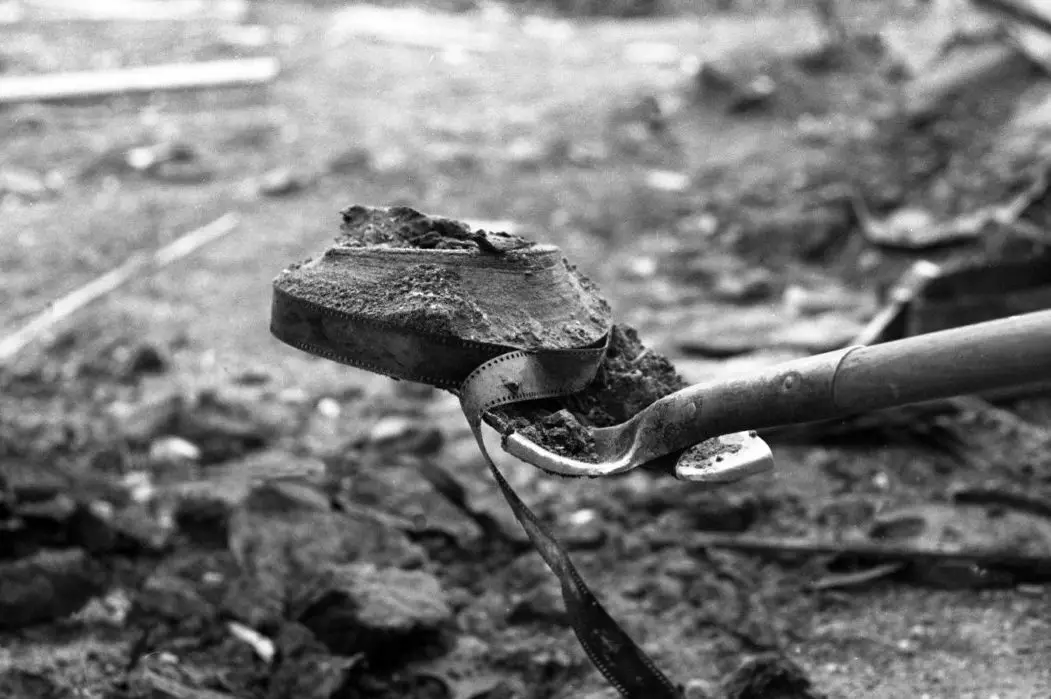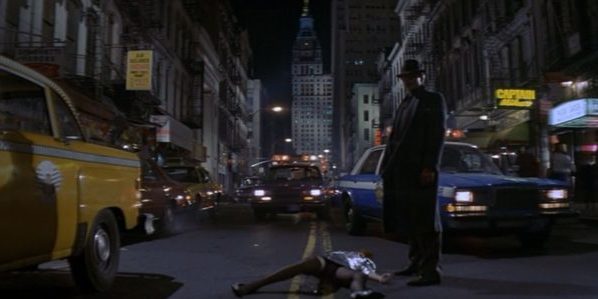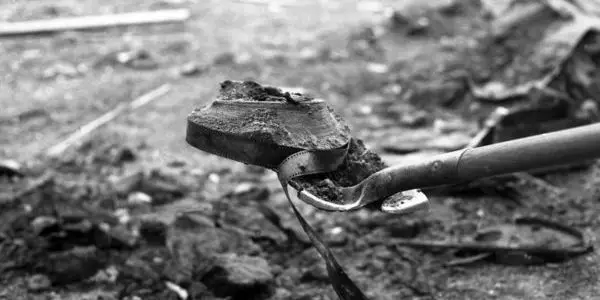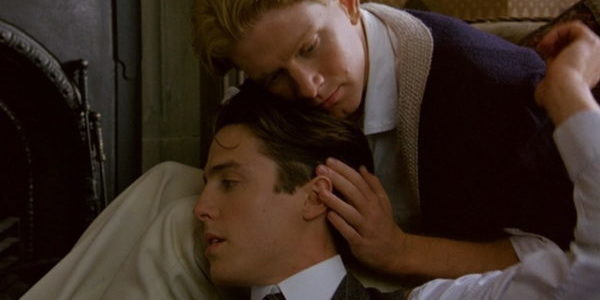Video Dispatches: YEAR OF THE DRAGON, DAWSON CITY: FROZEN TIME & MAURICE

Midwesterner, movie lover, cinnamon enthusiast.
Video Dispatches is a regular digest of recent home video releases.
Year of the Dragon (1985) – Warner Archive

Four years after the well-documented disastrous production of his best work, Heaven’s Gate, Michael Cimino was granted final cut (later amended) by legendary producer Dino De Laurentiis for Year of the Dragon, a film about Chinatown gang and police conflicts and the policeman (played by Mickey Rourke) determined to put an end to it. It was the last film Cimino ever scripted, and here shared duties with Oliver Stone.
The film is probably what you would expect of a mid-80s creative project about urban racial tensions from the brains of Cimino, Stone, and Rourke — excessive and violent, uneven but sincere, cathartic and coke-addled.
Year of the Dragon enjoyed moderate box office success and wasn’t beloved by critics — Cimino even took the Razzie for Worst Director (one of its five nominations) — but it’s since gained a small contingent of champions and cultish followers, surely boosted in part by Quentin Tarantino naming it one of his favorite films of all time. And now, they have a lovely new Blu-ray courtesy of the folks at Warner Archive.
The disc’s main supplement is a Cimino commentary that he recorded for the initial DVD release in 2005, which he opens with a fetishistic love of Chinese people, including his many Chinese girlfriends of past — something palpably suspicious during a long shot of Ariane getting out of the shower of her incredibly lush skyline loft to answer a knock at the door (which makes the shots of Isabelle Huppert bathing in Heaven’s Gate feel absolutely prudish). But he spends a majority of the track talking about the film’s logistics, including his knack for matching actions despite globetrotting in-between.
Cimino also speaks at length about his autodidacticism and learning on the fly, primarily calling himself a de facto student of Clint Eastwood, who starred in his debut Thunder and Lightfoot. His lack of knowledge of fundamental film school language, mixed with a proclivity for shooting in many locations, is probably what led to Janet Maslin, in her New York Times review, to point out that the color of Rourke’s hair changes from scene to scene.
While I don’t think Cimino knows where to go with this story, watching him create its world is good fun. Rourke’s Stanley White, an egotistical and equally racist, well-meaning and wrongheaded bull-in-a-china-shop, is a fascinating character, and I can’t help but wonder if Cimino finds something of an avatar in him. Unfortunately, the romance between Rourke and Ariane is quite stilted, though I was moved by the melodrama between him and Caroline Kava, playing the neglected wife. Like I said, the film is an uneven mess, and it’s hard to avoid wondering what Michael Mann or Paul Schrader could’ve done with the story, but what we got is nothing to sneeze at, though there was probably plenty of that happening on set.
Dawson City: Frozen Time (2016) – Second Run

On the video interview included on Second Run’s new Blu-ray of the 2016 documentary Dawson City: Frozen Time, filmmaker Bill Morrison, who often works with archival and decaying film, says he’s interested in ageing celluloid as a material (not just a text) because of the layered markers of time present in its decay. On top of the film, which has a clear origin (for instance: a short film made in 1913), you have the visual rot that mark the passing of time, from its creation to today. With Dawson City, Morrison attempts to tell that definite story for a group of 533 silent film reels found in an old swimming pool in the titular Canadian city in 1978 after decades of lying dormant.
The product is a strangely beautiful and strangely conventional story of a Gold Rush town in the Yukon — how North American towns like this were formed, how the Rushers formed civic spaces and, often, abandoned it for the next promise of gold. This is all told through archival film and, whenever possible, from reels salvaged in the Dawson City Film Find. Particularly striking in Morrison’s film is his ability to draw me into the real lives of Dawson City through cobbled together silent movies. It’s a lovely feat of documentary editing that, as too often happens, goes overlooked by critical establishments come awards time.
While Dawson City is the film’s foregrounded subject matter, Morrison is equally interested in images — both the lasting power of them and their ephemerality. He illustrates the athletic center-cum-cinema as place of both entertainment for citizens and where they would learn about the world, through films that, whether poorly or fairly, presented walks of life outside Dawson City.
Apropos for Morrison’s meditation on ephemera is the film’s nearly constant score by Alex Somers (with sound design by brother John Somers), most notably a member of Icelandic avant/post-rock band Sigur Rós, which is ghostly in its sweeps. In the appended interview, Morrison says the score, which has traveled with the film as a live show, contains a sense of wonder, and I’m inclined to agree. While Sigur Rós have long fallen out of my personal rotation or desire to see on a soundtrack, I find Somers’ work here monumentally important to the film working. From hearing other reactions, I understand it works to the contrary for others, but during both of my viewings, its transitory tone has brought me in, not out.
Shortly after the film’s release, Kino Lorber released this title on a dutiful Blu-ray in the U.S. with a handful of nice features. What Second Run have done here is slightly outdo them, adding some important supplements on top of the ones they duplicated from Kino’s release. Most significant of its additions is Morrison’s 2018 short film The Letter. Those acquainted with Morrison’s pre-Dawson City filmography probably know what to expect: a 12-minute repurposing of decaying nitrate silent films into his own poignant poetry. Now, if only someone can release Somers’ score…
Maurice (1987) – BFI

Maurice, the autobiographical bildungsroman about a young gay man’s sexual awakening by E.M. Forster, was adapted by Merchant Ivory — professional and life partners Ismail Merchant and James Ivory, most known for their English literary adaptations — in 1987, just 16 years after the novel’s posthumous publishing, although it was written nearly 60 years prior.
And last year, the Cohen Media Group revived the film with a 4K restoration (now available on Blu-ray form both Cohen and BFI) — perhaps an attempt to disembalm interest in the Merchant Ivory canon following the success of the Ivory-scripted Call Me By Your Name.
Maurice is one of the small handful of Merchant Ivory films that Ivory screenwrote, sharing credit here with Kit Hesketh-Harvey, and the second of three Forster adaptations made by the duo. Unfortunately, the film struggles to carry the beautiful interiority of its source, which I would partially contribute to the casting of James Wilby (in his first leading role) after Julian Sands walked away. He can’t seem to help but render Maurice as thick as his golden, flowing hair, and certainly has trouble staying afloat with scene partner Hugh Grant.
Nonetheless, the film is a pleasurable experience, bolstered no doubt by its delightful set design and atypically cool palette captured by French cinematographer Pierre Lhomme. On one of the many supplemental features on BFI’s exhaustive two-disc release, Ivory speaks to his desire to specifically hire a foreign DP, saying that Lhomme (who previously shot Quartet for them) would not only bring a new perspective to the location’s buildings, which had already been captured on film millions of times, but Ivory also wanted to avoid the macho archetypal English cameraman. The director was afraid that a masculine native cinematographer would be uncomfortable shooting many of the vulnerable, sexual and sensual scenes of the film.
Indeed, the film feels comfortable with its own sexuality — something a fair amount of people criticized Call Me By Your Name for lacking, most notably calling out director Luca Guadagnino’s desire to pan away during a climactic sex scene.
According to Claire Monk, who contributes both a commentary track and a Q&A with Wilby, the original screenplay experimented with a non-linear approach, a divergence from Forster’s novel, but Merchant Ivory ended up staying pat in the editing room. I can’t help but wonder whether that approach would’ve worked a bit better. I don’t have many qualms with the standard trajectory here, except that the build of Maurice and Durham’s (Grant) romance feels quite abbreviating, cutting off a sense of accumulated confusion and wonder that is integral as an access to the protagonist’s head space. But perhaps that’s just one of those annoying side effects of watching a screen adaptation shortly after getting acquainted with its source.
What are your thoughts on any of the films mentioned?
Does content like this matter to you?
Become a Member and support film journalism. Unlock access to all of Film Inquiry`s great articles. Join a community of like-minded readers who are passionate about cinema - get access to our private members Network, give back to independent filmmakers, and more.













